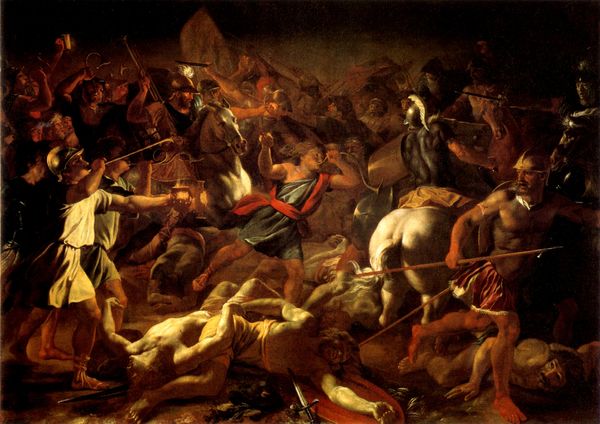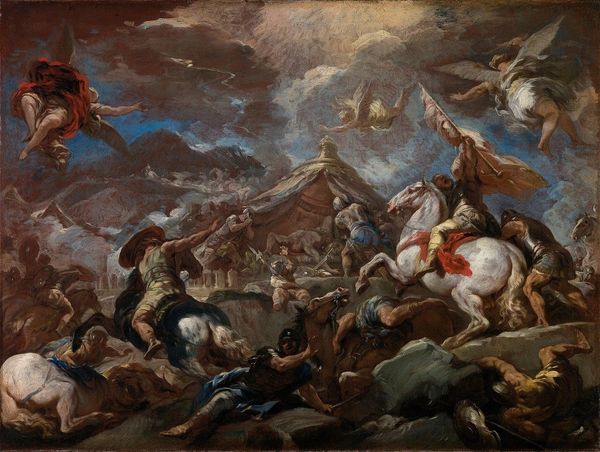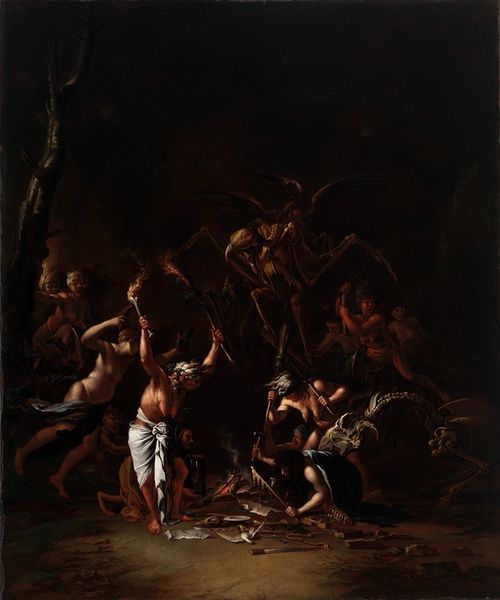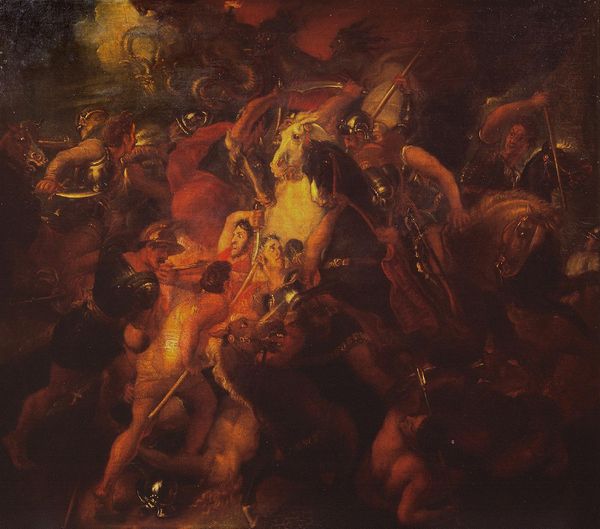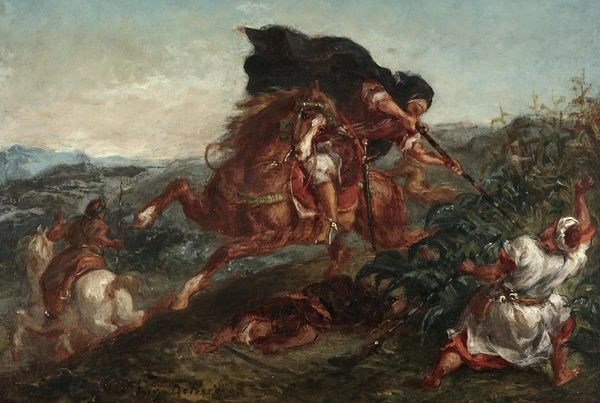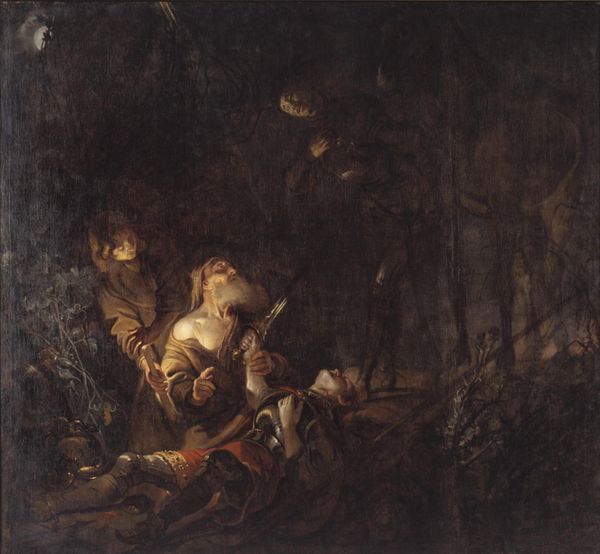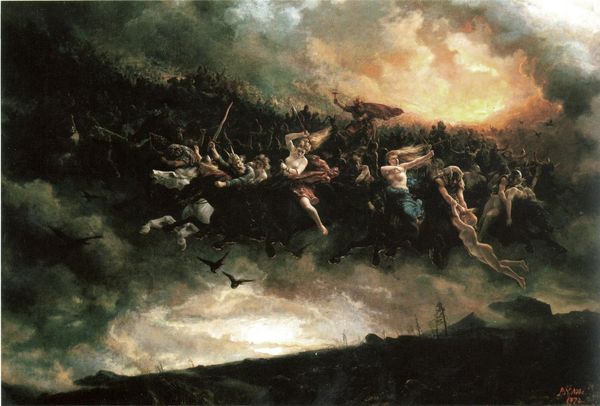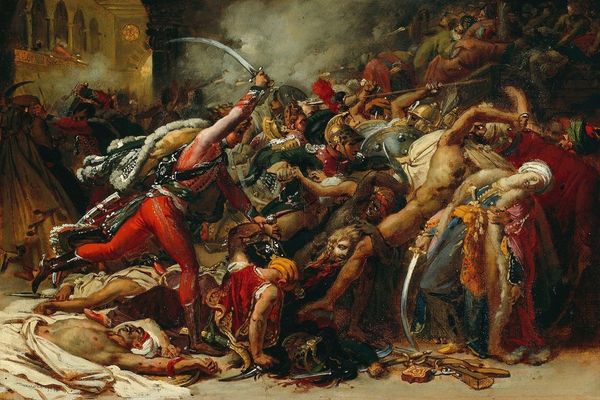
oil-paint
#
baroque
#
fantasy art
#
oil-paint
#
figuration
#
mythology
#
genre-painting
#
history-painting
Copyright: Public Domain: Artvee
Curator: What a fascinating canvas. We’re looking at Luca Giordano’s “The Riches of the Sea with Neptune, Tritons, and Two Nereids," created around 1684 using oil paints. Editor: It's quite a scene! My first thought is how baroque it is, teeming with figures and textures. It almost feels claustrophobic, despite the open-sea subject matter. The color palette seems dominated by deep reds and browns. Curator: Yes, and that dramatic tension plays right into Giordano's baroque style. Consider how he layered the oil paints, using broad strokes to capture the glistening wetness of the scene. Neptune's grand gesture amidst this bounty isn't just a celebration but reflects 17th-century ideas about empire and accessing the world's resources. Editor: The sheer volume of seafood piled there— lobsters, fish, shells — it’s overwhelming. The textures certainly catch the eye, and it looks like they have used lead white and verdigris as ground layers, what sort of pigments they could reach is crucial here. I'm also intrigued by the cherub floating above, which softens the overall impact of that rather intense focus. Curator: Absolutely, the cherub adds a touch of ethereal lightness to the somewhat raw portrayal of Neptune and his sea-folk claiming earthly provisions. It connects this underworld scene to ideals and aesthetics valued by aristocratic patrons and collectors of the era. Editor: I see what you mean, particularly given Neptune’s pose. Let's focus on him. The strong diagonals formed by his trident and outstretched arm guide the eye to the abundant piles of creatures. It adds visual dynamism, capturing a moment of grand assertion of wealth or an allegorical pose to glorify naval trade, that definitely requires understanding who has sponsored this work! Curator: Well articulated. It’s evident that the piece served specific political and economic interests while celebrating mythology in a flamboyant style! Editor: Definitely! I had missed all these layers to simply celebrate beauty, materials always bring more light to any piece. Curator: And conversely, exploring the formal features certainly gives us means to trace who supported this piece!
Comments
No comments
Be the first to comment and join the conversation on the ultimate creative platform.
